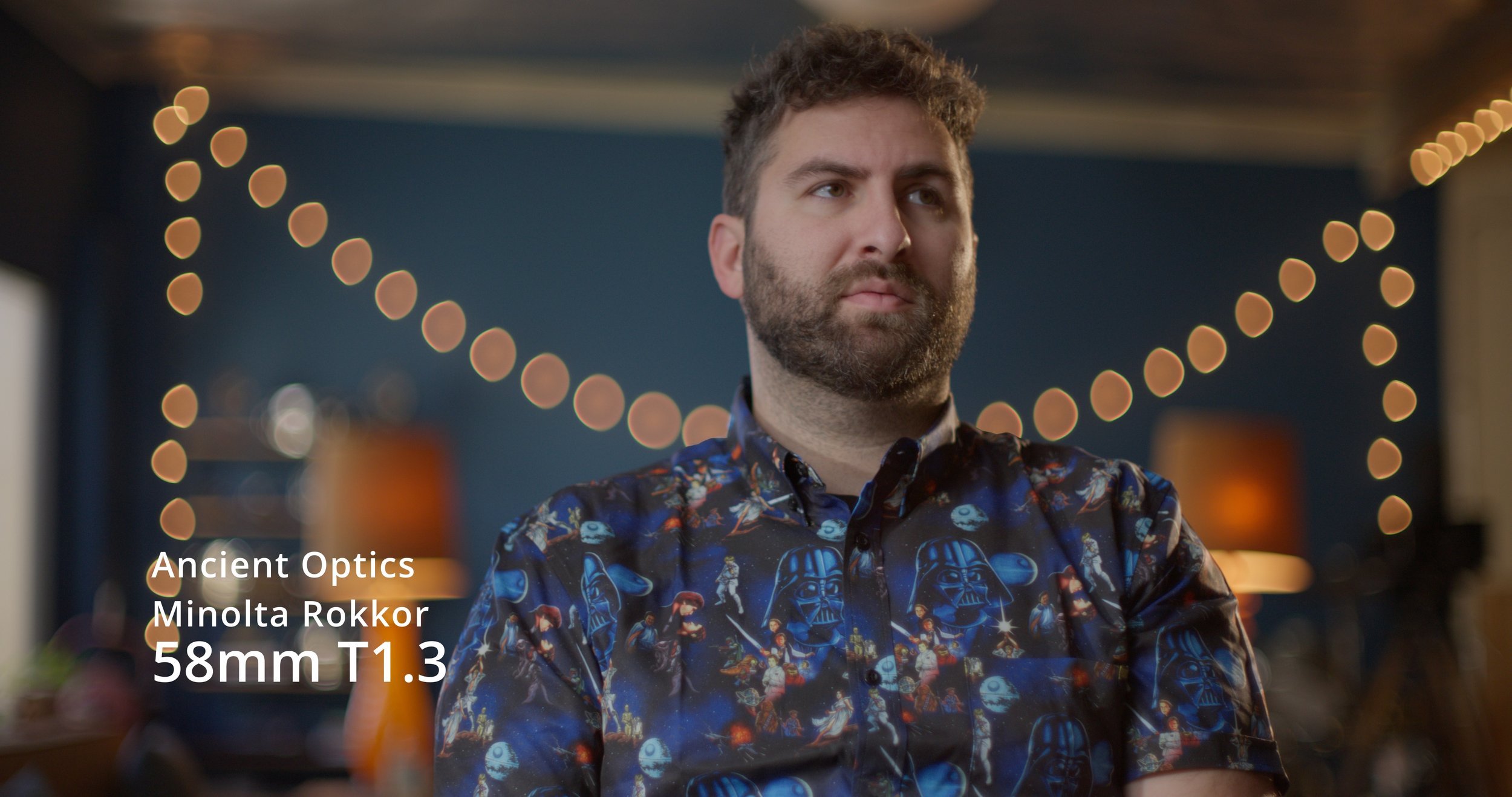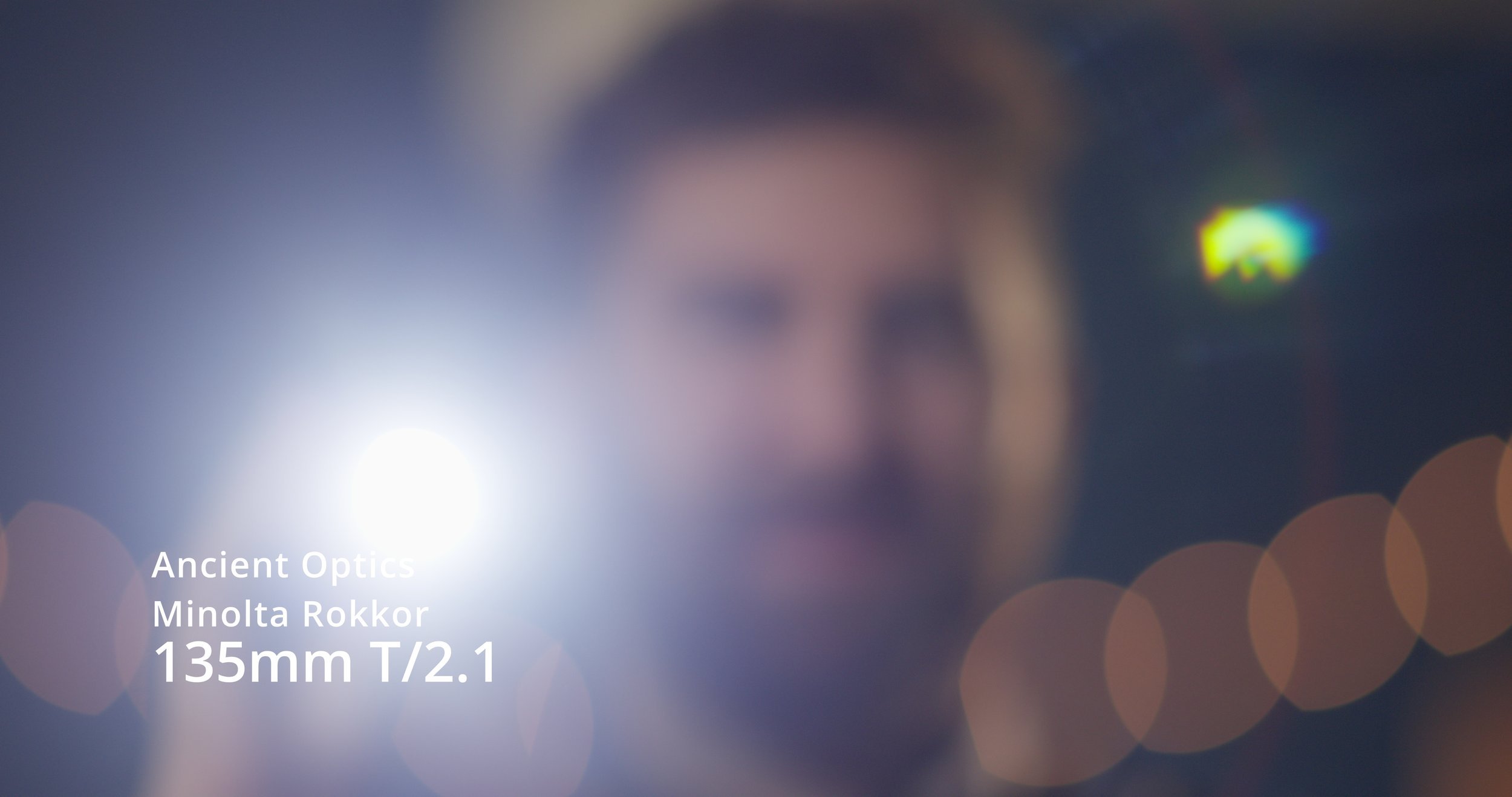Sony Venice 2 - Ancient Optics Minolta Rokkor - Full Frame Lens Test
Today we’re looking at another lens test on the Sony Venice 2. I am testing for a couple of upcoming projects, and building out more of my library of full-frame spherical lenses. I looked at Ancient Optics Minolta Rokkor rehoused by GL Optics in this test. Next week we’ll look at Zero Optik’s rehoused Olympus OM lenses! It should be noted that I did not test every focal length in each set due to the sheer volume of lenses I was testing on the day.
Camera Settings:
Camera: Sony Venice 2
Recording Resolution: 8.2K 17:9 (8192 x 4320)
Codec: X-OCN LT
Color processing: Sony S-Gamut3.Cine / S Log3 to Rec709 / Gamma 2.4 color space transform.
ISO: 800
FPS: 23.98p
Table of Contents
Timestamps
Ancient Optics Minolta Rokkor
21mm T/2.9 00:09 - 02:15
35mm T/1.9 02:25 - 04:24
58mm T/1.3 04:24 - 07:13
135mm T/2.1 07:13 - 09:12
200mm T/2.9 09:12 - 11:35
Ancient Optics Minolta Rokkor
Minolta Rokkor Wide Prime Lenses in a custom Pelican case.
Minolta Rokkor Long Prime Lenses in a custom Pelican case.
List of technical specifications for Minolta Rokkor rehoused prime lenses from Old Fast Glass rental company.
Lens Notes
Minolta Rokkor 21mm T/2.9
The 21mm Rokkor had a little subtle distortion and a noticeable vignette on the edges, especially when compared to the Tribe7 Blackwing tested before this. The lens performs well wide open, however it isn’t terribly sharp, but when stopped down to a t/5.6 this lens really shines and is tack sharp.
Ancient Optics Minolta Rokkor 21mm at t/2.9 and t/5.6
Flare characteristics on the 21mm. Fairly minimal flaring on this lens, but it has a noticeable vignette on the edges of the lens.
Minolta Rokkor 35mm T/2.9
Minolta Rokkor 35mm T/1.9 lens.
Minolta Rokkor 58mm T/1.3
Minolta Rokkor 58mm T/1.3 lens.
This was my favorite lens we looked at out of all of them. It’s super fast t/1.3 aperture, 15" close focus, unique cat's eye bokeh at the outer edges of the lens, and rainbow flare give this lens a lot of character. I recently learned this lens was used by Greig Fraser on Dune Part 2 and was one of their “hero” lenses for the film. I can see why! It’s a gorgeous portrait lens.
“[…] In some cases radioactive compounds of thorium and lanthanum were added to the glass mixture to increase the refractive index. This is apparent in some of the faster lenses such as the 58mm f/1.2 and 85mm f/1.7, where some early versions that included this glass have had their radioactive ingredients progressively decay, discoloring the glass, and giving the images taken with the affected lenses a very warm cast.”
Minolta Rokkor 135mm T/2.1
Minolta Rokkor 135mm T/2.1 lens.
Beautiful and sharp with a subtle contrast, nice falloff and noticeable Cat Eye bokeh.
What the heck is cat eye bokeh?: “Cat’s Eye” or “Football” bokeh at the edge of the lens is created by a partially occluded entrance pupil from obtuse angles of light. The light coming from these steeper incident angles only "sees" a portion of the entrance pupil. This occluded shape then influences the shape of the bokeh.
To help imagine this idea, if you look at a lens straight. on, you'll see the circular aperture inside, or if the aperture is wide open, the inner diameter of the lens housing. If you then start to turn that lens away from you, that circle will take on an elliptical shape as you start to "hide" the aperture from your eye. This is how those "football" shapes happen. The physically longer a lens is and/or the deeper the entrance pupil is inside the lens, the more rapidly the pupil will be occluded by off-axis light. Stopping down the lens can help to minimize the occlusion of the entrance pupil, as a smaller opening is more readily "seen" from obtuse angles.
To this end, hard-mattes on the front of the matte box, Or "eyebrows" over the lens can also affect the bokeh. Even when an obstruction isn't seen in the shot, its effect can sill sten be seen in the highlights of the bokeh if it alters tie shape of the entrance pupil of the lens.
- Jay Holben and Christopher Probst ASC, The Cine Lens Manual (Adakin Productions Press, 2021), p.186.
Really nice flaring on the 135, some bloom on the light source with a subtle narcissism flare around the edges.
Minolta Rokkor 200mm T/2.9
The 200mm Rokkor has really pleasing falloff, a nice subtle warmth and renders skin tones beautifully. The lens is sharp wide open with a slightly reduced contrast overall, making for a gorgeous telephoto option.
Final Thoughts
More of a warm look, especially in contrast to the modern coatings on the Tribe 7 Blackwings.
Impressive close focus.
Very interesting falloff on the edges of the lens, most notably the 58mm.
Really loved the latest housing from GL Optics, it’s a really unique look that suits these lenses well.
Slight vignette throughout the most of the range.
Surprisingly minimal chromatic aberration.
Practical shooting example
The two-letter code describes the lens architecture: First letter may be T, Q or P for tertia, quarta or penta (3, 4 or 5) groups, and the second letter indicates the number of lens elements: C, D, E, F or G for 3, 4, 5, 6 or 7 elements. Thus a Rokkor-PF has P=5 groups and F=6 elements.
“Rokkor” refers to Mt. Rokko which could be seen from the Minolta factory in Japan. In the late 60’s and all through the 70’s, Minolta made some of the best glass in the world under the Rokkor label. Unlike most manufacturers, Minolta was capable of producing its own glass elements and coatings. Their reputation for innovation and quality was already firmly in place.
The Rokkor line of lenses was one of the most complete sets on the market. Our initial offering consists of 11 focal lengths from 21mm to 200mm with an ultra wide and two macros to be added soon. The well known 21mm f2.8, 58mm f1.2, and 85mm f1.7 are still coveted by photographers around the world. The 100 f2 is an earlier design, but easily one of the best Rokkors ever. However, one of Minolta’s latest designs is the most special of them all - The incredible 135mm f2.
Fifty years later the Minolta Rokkors are ready for the spotlight once again. This time in highly customized G.L. Optics Mark 5 cinema housings. When design, craftsmanship, and performance converge, a special product is born. These lenses are truly special.
Sources:
















